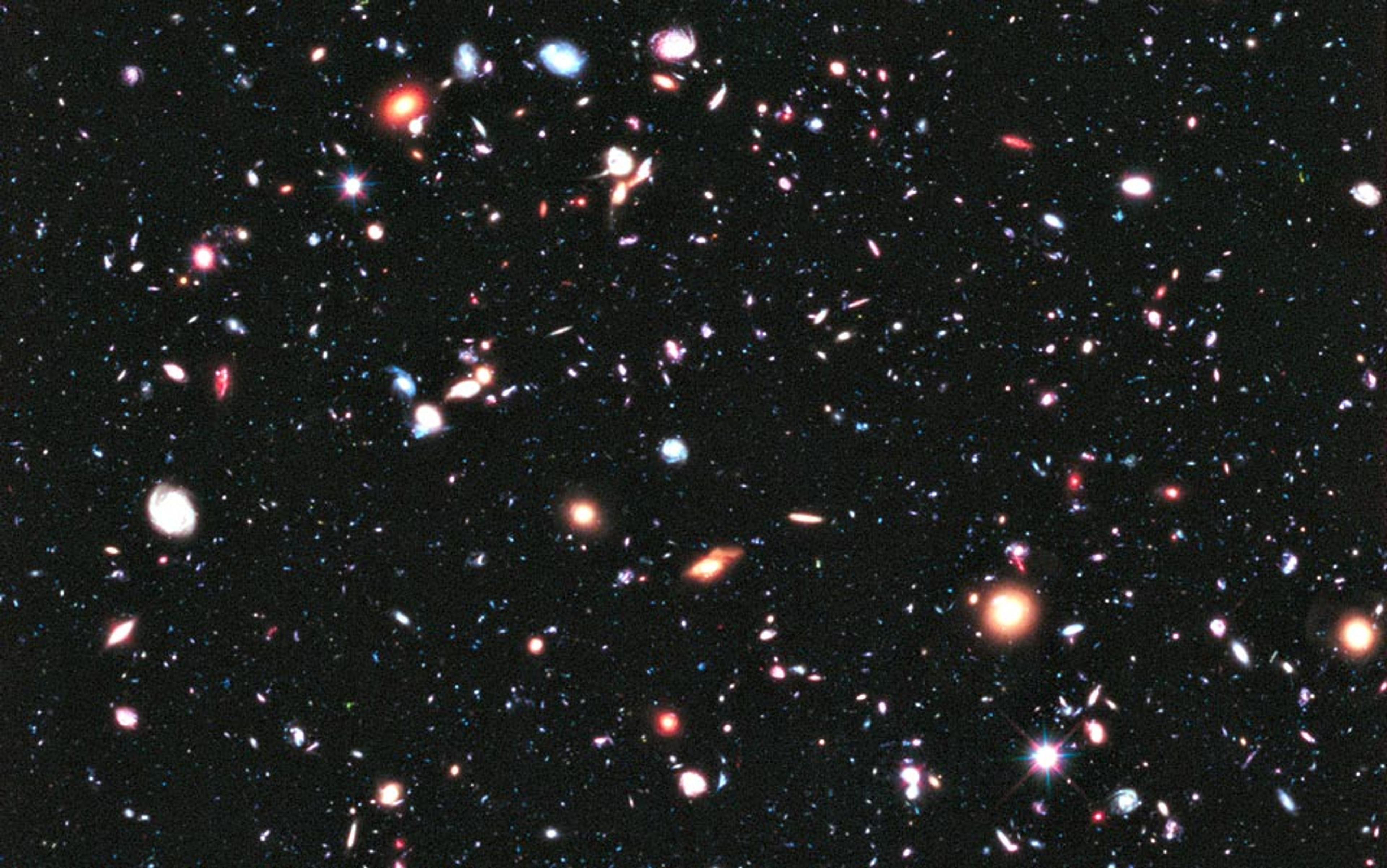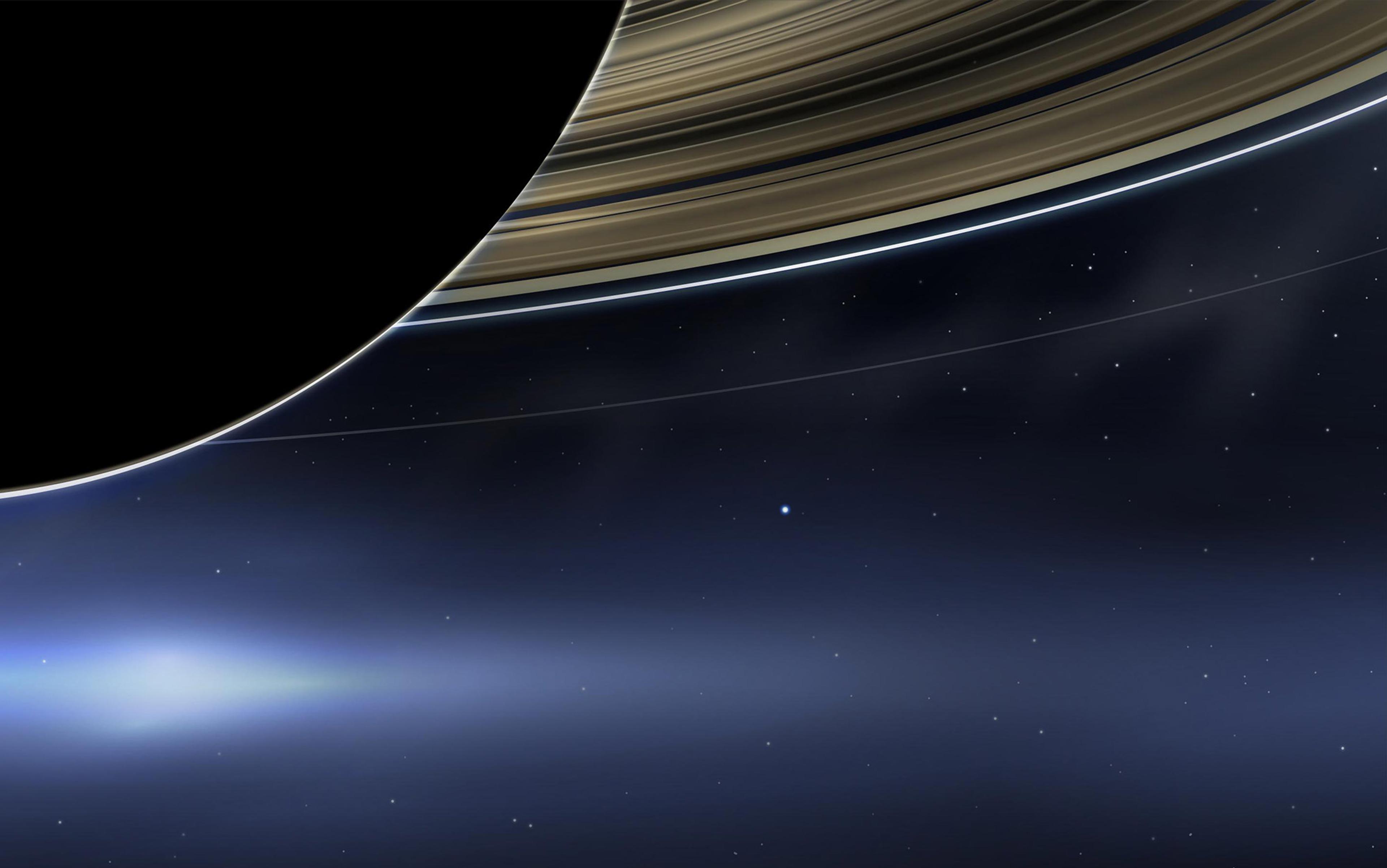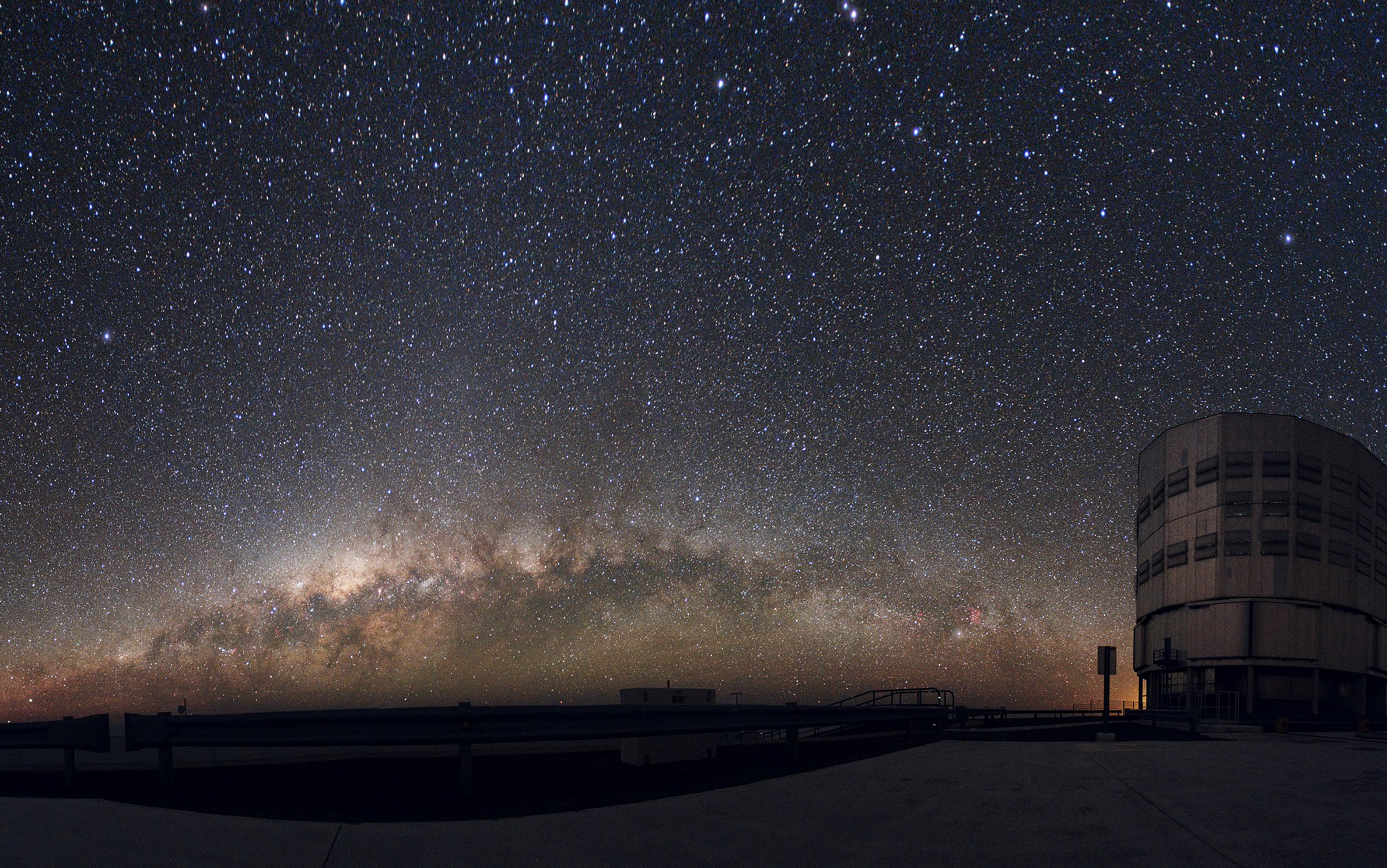Welcome to the ‘anthropic principle’, a kind of Goldilocks phenomenon or ‘intelligent design’ for the whole Universe. It’s easy to describe, but difficult to categorise: it might be a scientific question, a philosophical concept, a religious argument – or some combination. The anthropic principle holds that if such phenomena as the gravitational constant, the exact electric charge on the proton, the mass of electrons and neutrons, and a number of other deep characteristics of the Universe differed at all, human life would be impossible. According to its proponents, the Universe is fine-tuned for human life.
This raises more than a few questions. For one, who was the presumed cosmic dial-twiddler? (Obvious answer, for those so inclined: God.) Second, what’s the basis for presuming that the key physical constants in such a Universe have been fine-tuned for us and not to ultimately give rise to the hairy-nosed wombats of Australia, or maybe the bacteria and viruses that outnumber us by many orders of magnitude? In Douglas Adams’s antic novel The Hitchhiker’s Guide to the Galaxy (1979), mice are ‘hyper-intelligent pan-dimensional beings’ who are responsible for the creation of the Earth. What if the Universe isn’t so much anthropic as mouse-thropic, and the appearance and proliferation of Homo sapiens was an unanticipated side effect, a ‘collateral benefit’?
For a more general perspective, in The Salmon of Doubt (2002), Adams developed what has become known as the ‘puddle theory’:
[I]magine a puddle waking up one morning and thinking, ‘This is an interesting world I find myself in – an interesting hole I find myself in – fits me rather neatly, doesn’t it? In fact it fits me staggeringly well, must have been made to have me in it!’
It appears that Adams favoured a puddle-thropic principle. Or at least, the puddle did.
But perhaps I should be more serious about an idea that has engaged not just theologians and satirists but more than a few hard-headed physicists. The Australian astrophysicist Brandon Carter introduced the phrase ‘anthropic principle’ at a conference in Krakow, Poland in 1973 celebrating the 500th anniversary of the birth of Copernicus. Copernicus helped evict the Earth – and thus, humanity – from its prior centrality, something that the anthropic principle threatens (or promises) to re-establish. For Carter, ‘our location in the Universe is necessarily privileged to the extent of being compatible with our existence as observers’. In other words, if the Universe were not structured in such a way as to permit us to exist and, thus, to observe its particular traits, then – it should be obvious – we wouldn’t be around to marvel at its suitability for our existence!
In A Brief History of Time (1988), the late British physicist Stephen Hawking described a number of physical constants and astrophysical phenomena that seem at least consistent with the anthropic principle. Hawking noted that ‘if the rate of expansion one second after the Big Bang had been smaller by even one part in a hundred thousand million million, the Universe would have recollapsed before it ever reached its present size’. In short, a change so small it challenges the imagination, and the Big Bang would have turned into a kind of Big Crunch.
Albert Einstein considered the ‘cosmological constant’, which he introduced in 1917, his ‘biggest blunder’. Considering the emergence of the anthropic principle, however, it seems prescient. Einstein was troubled by the fact that gravity would cause the Universe to collapse onto itself (that Big Crunch), so he surmised a constant – essentially out of thin air – that pulled in the opposite direction, causing the cosmos to remain stable. The American physicist Steven Weinberg – not a religious believer – points out that if this now-confirmed constant were just a smidgeon larger, the Universe would be vaporously insubstantial. It would never have stopped expanding at a rate that precludes the formation of galaxies, never mind planets or mammals such as ourselves.
In 1961, providing even more fodder for the anthropic principle, the American physicist Robert Dicke noted that the age of the Universe reflects a kind of Goldilocks principle. Dicke suggested that, at an estimated 14.5 billion years of age, our Universe stands at a ‘golden interval’, neither too young nor too old, but just right. Any younger – ie, if the Big Bang had occurred in the more recent past – and it would not have allowed enough time for nucleosynthesis to stock the Universe with elements heavier than hydrogen and helium. There would be no medium-size, rocky planets and thus, no us. By the same token, if the Universe were substantially older than it is, most stars would have matured into white and red dwarfs. They would be too old to remain part of what astrophysicists call the ‘main sequence’, and unable to support stable planetary systems. The four fundamental interactions connecting mass and energy – gravitation, electromagnetic attraction and repulsion, and the ‘strong’ and ‘weak’ nuclear forces – also appear balanced precisely as needed to produce matter and, ultimately, life. Put it all together and there appears to be a significant case for the anthropic principle.
Not everyone, however, agrees that the necessary conditions for a life-supporting Universe are so delicate. ‘The parameters of our Universe,’ writes the astrophysicist Fred Adams at the University of Michigan, ‘could have varied by large factors and still allowed for working stars and potentially habitable planets.’ What to believe?
It’s important to note that the anthropic principle exists in two primary forms, ‘strong’ and ‘weak’. Over-simplifying, the weak principle is teleological. It holds that, as Carter had pointed out, whatever conditions are observed in the Universe must allow the observer to exist. In short, if these constants weren’t as they are, we wouldn’t be around to worry about them. To this, Hawking added that even slight alterations in the life-enabling constants of fundamental physics in this hypothesised multiverse could ‘give rise to universes that, although they might be very beautiful, would contain no one able to wonder at that beauty’. The weak version of the anthropic principle thus poses a logical conundrum.
The strong version is very different; it is in essence a religious expression, maintaining that some divine being created the Universe for human life. An even stronger version has been called the final anthropic principle, namely that ‘intelligent information-processing must come into existence in the Universe, and, once it comes into existence, will never die out’. Martin Gardner, a former maths and science writer for Scientific American, dubbed it the ‘completely ridiculous anthropic principle’ (CRAP).
The anthropic assertion, whether in its weak, strong or final version, has generated some more serious, and interesting, responses. One is contained within Einstein’s remark: ‘What really interests me is whether God had any choice in the creation of the world.’ Posing whether ‘God had any choice’ was Einstein’s way of asking if the manifold characteristics of the physical Universe, such as the speed of light, the charge of the electron and the proton, etc, are fixed or susceptible to alternatives. If fixed, they might appear to have been organised with carbon-based life in mind, but were actually not ‘free parameters’ in the first place. Note that Einstein was asking if the deep laws of physics might have in fact fixed the various physical constants of the Universe as the only values that they could possibly have, given the nature of reality, rather than having been ordained for some ultimate end – notably, us. At present, we simply don’t know whether the way the world works is the only way it could; in short, whether currently identified laws and physical constants are somehow bound together, according to physical law, irrespective of whether human beings – or anything else – eventuated.
The Universe is a big place and despite our understandable fascination with the anthropic principle, the stark truth is that nearly all of it is incompatible with life – at least our carbon-based, water-dependent version of it. Given the abundance of other possible locations, if humans existed simply as a result of chance alone, we’d find ourselves (very briefly) somewhere in the very cold empty void of outer space, and would be dead almost instantly. Might this, in turn, contribute to the conclusion that our very existence is evidence of a beneficent designer? But we’re not the outcome of a strictly random process: we find ourselves occupying the third planet from the Sun, which has sufficient oxygen, liquid water, moderate temperatures, and so forth. It isn’t a coincidence that we occupy a planet that is suitable for life, if only because we couldn’t survive where it isn’t. It’s no more amazing that the Earth isn’t a hot gas giant than the fact that no matter how tall or short a person might be, her legs are always precisely long enough to reach the ground.
To marvel at the fact of our existing is like a golf ball being amazed that it ended up wherever it did
Then there is another question – not necessarily deeper, but perhaps more perplexing. More than three centuries ago, in his chapter on ‘The Principles of Nature and of Grace, Based on Reason’ in Philosophical Papers and Letters (1714), the German philosopher, mathematician and physicist Gottfried Leibniz noted that ‘the first question which we have a right to ask will be, “Why is there something rather than nothing?”’ (Here, I’m especially fond of the American philosopher Sidney Morgenbesser’s reply to Leibniz, that ‘if there were nothing you’d still be complaining!’) But there is something, and of course, if there weren’t, there wouldn’t be any opportunities for complaint. This is not only an answer to the question of whether the Universe has been fine-tuned for us; it also points to a more general merging of statistics, logic and common sense, namely the difference between probabilities before and after an event.
For example, the English-Canadian philosopher Niall Shanks asks us to imagine shuffling a deck of cards and then dealing them out, face down. What is the likelihood that someone could predict the entire sequence, in advance, and without any hanky-panky? The chance of getting the first card correct is 1 in 52. The chance of getting the first two cards correct is 1/52 x 1/51 = 1/2652, so that the probability of guessing the entire deck in the proper order is 1/52 factorial. This is an unimaginably small number, something like 1 in 10 followed by 60 zeros. And yet, among the near-infinity of possibilities, they had to come out some way, and – miracle of miracles – they did!
Consider the probabilities before versus after a simple event, such as the position of a golf ball before compared to after a golfer hits it. It would take a near-miracle to identify precisely where that ball will eventually come to rest. But the outcome – wherever the golf ball ends up – isn’t a miracle at all. Neither is it evidence of divine intervention, nor of the golf course having been designed so as to arrange for that particular eventual placement of the ball, since it had to be somewhere. For us to marvel at the fact of our existing (in a Universe that permits that existence) is comparable to a golf ball being amazed at the fact that it ended up wherever it did.
There are many ways and contexts in which to interpret what might be called the unexpectedness of our existence, none of which necessarily supports the conclusion of divine planning. Every person exists because a particular egg (1 out of roughly 500 ovulated by the person’s mother in her lifetime) encountered a particular sperm (1 out of roughly 150 million produced by the person’s father in a single ejaculation). According to the perspective and logic of the anthropic principle, every member of the human population of roughly 7.5 billion can therefore insist that his or her existence was foreordained, evidence of a me-thropic principle.
For a wider-ranging example, consider the case of the Chicxulub asteroid, which, 66 million years ago, crashed into what is today Mexico’s Yucatán Peninsula. Eventually, its impact wiped out the dinosaurs, clearing a path for the rise of mammals. Should we see the Chicxulub impact as evidence that our planet’s fine-tuning wasn’t working very well so the Earth needed a collision with a massive and catastrophic asteroid to prepare it for human life? Was the dinosaurs’ destruction collateral damage en route to the ultimate goal of creating Homo sapiens roughly 65 million years later?
Physics has additional possible explanations for what masquerades as cosmic fine-tuning. Of these, one of the more intriguing (albeit difficult to grasp) is the possibility of ‘multiverses’, which revisits the question of probabilities before versus after an event, albeit in a somewhat different guise. Here is the British astrophysicist Martin Rees:
[T]he cosmos may have something in common with an off-the-rack clothes shop: if the shop has a large stock, we are not surprised to find one suit that fits. Likewise, if our Universe is selected from a multiverse, its seemingly designed or fine-tuned features would not be surprising.
Shanks suggests that the multiverse hypothesis ‘does to the anthropic Universe what Copernicus’s heliocentric hypothesis did to the cosmological vision of the Earth as a fixed centre of the Universe’. Post-Copernicus (and Kepler, Galileo and others), the Earth is known to be just one planet among many, in one galaxy among many. Perhaps we’re just the occupants of one universe among many. Interestingly, even as he demoted the Earth, Copernicus himself placed the Sun in the centre of the Universe, just as he assumed that planetary orbits were perfect circles. This was an assumption common in early astronomy, based on the notion that the ‘heavenly bodies’ are perfect, just as, in their geometry, circles are perfect. Galileo, too, presumed circular planetary orbits. It was the German mathematician and astronomer Johannes Kepler – using data from his fellow astronomer Tycho Brahe – who showed the world that they are elliptical. Like the human body, the cosmos is far from perfect. But like the human body, it is good enough to have permitted our existence.
What if natural selection occurs at the level of galaxies, and those with a potential for life are more likely to replicate?
For the possibility of extraterrestrial life, it seems likely (although by no means certain) that it would have to reside on one or more exoplanets, asteroids or perhaps a comet, rather than within a star or freely floating in open space. Such exoplanets would have to be associated with stars that, for example, don’t emit massive amounts of X-rays or other forms of radiation. This all presumes ‘life as we know it’. Maybe there are beings out there who cheerfully bathe in levels of what terrestrial biologists know as lethal amounts of energy, or who get by, even thrive, on insufficient energy to sustain a perseverating entity that would qualify – to us – as alive.
Quantum mechanics offers another potential solution to the anthropic conundrum; one that seems, if anything, weirder than the multiverse hypothesis. According to theory – the same theory that gives rise to, among other things, the very real computer on which I am writing – matter, at its most fundamental level, is made up of probabilistic wave functions, which only transition to ‘reality’ when a conscious observer intervenes to measure or perceive it. In the famous ‘double-slit experiment’, light is revealed to be either a particle or a wave only after it is measured as one or the other. Prior to this, photons do not, in a sense, exist as clear-cut entities; afterward, they do.
The American theoretical physicist John Wheeler, one of the pioneers of quantum mechanics (who coined the term ‘black hole’, and who counted the Nobel laureate Richard Feynman among his students) suggested a participatory anthropic principle, whereby, believe it or not, the Universe had to include conscious beings in order for it – not necessarily us – to exist. I don’t believe it. At the same time, the fact that one of the world’s most renowned physicists floated this as a genuine possibility gives at least some credence to the notion that perhaps this or some other inverted version of the weak anthropic principle shouldn’t be rejected out of hand.
There are, of course, people who reject evolution out of hand but who might nonetheless be intrigued by the following argument: maybe it’s not surprising that we live in a Universe suitable for life, not because that Universe has been fine-tuned for us (the strong anthropic principle) or has somehow been ‘made real’ by us (Wheeler’s inverted weak anthropic principle), but because we are fine-attuned to it as a result of natural selection. Just as the physical qualities of air have selected for the structure of bird wings, and the anatomy of fish speaks eloquently about the nature of water, maybe the nature of the physical Universe has in the most general sense, selected for life, and thus, for us.
There is also a more bizarre way of incorporating natural selection into the anthropic quest. What if natural selection occurs at the level of galaxies, or even universes, such that those offering the potential for life are more likely to replicate themselves? If so, then compared with life-denying galaxies, life-friendly ones might conceivably have produced more copies of themselves, providing greater opportunities for life forms such as ourselves. Aside from the rampant unlikelihood of this ‘explanation’, it remains unclear how or why such pro-life galaxies would be favoured over their more barren alternatives.
Nonetheless, the American theoretical physicist Lee Smolin has pursued the notion of ‘cosmological natural selection’, whereby perhaps not just galaxies but entire universes replicate themselves, courtesy of black holes. If so, then what sort of universes would be favoured – ‘selected for’, as biologists put it? Easy: those that employ physical laws and constants that are more fit, ie, that lend themselves to being reproduced. This conveniently explains (if explanation is the correct word) why our Universe contains black holes: it’s how they replicate. It also leads to the supposition that perhaps intelligent beings can contribute to the selective advantage of their particular universe, via the production of black holes, and who-knows-what-else.
As science grows, the gaps – and thus, God – shrinks
The American astronomer Carl Sagan broached another no less weird version of the anthropic principle in his novel Contact (1985). In it, an extraterrestrial intelligence advises the heroine to study transcendental numbers – numbers that are not algebraic – of which the best-known example is pi. She computes one such number out to 1020 places, at which point she detects a message embedded in it. Since such numerology is fundamental to mathematics itself and is thus, in a sense, a property of the basic fabric of the Universe, the implication is that the cosmos itself is somehow a product of intelligence. The message is clearly an artificial one and not the result of random noise. Or maybe the Universe itself is alive, and the various physical and mathematical constants are part of its metabolism. Such speculation is great fun, but it’s science fiction, not science.
It should be clear at this point that the anthropic argument readily devolves – or dissolves – into speculative philosophy and even theology. Indeed, it is reminiscent of the ‘God of the gaps’ perspective, in which God is posited whenever science hasn’t (yet) provided an answer. Calling upon God whenever there is a gap in our scientific understanding may be tempting, but it is not even popular among theologians, because as science grows, the gaps – and thus, God – shrinks. It remains to be seen whether the anthropic principle, in whatever form, succeeds in expanding our sense of ourselves beyond that illuminated by science. I wouldn’t bet on it.
Yet, despite what has been called ‘Copernican mediocrity’, the deflating recognition that we aren’t the centre of the Universe (and to which I would add ‘Darwinian mediocrity’, the acknowledgment that we weren’t specially created as chips off the old divine block), all this debunking of human specialness isn’t necessarily cause for despair or for a spasm of species self-denigration. Just because the anthropic principle is shaky at best, this need not, and should not, give rise to an alternative ‘misanthropic principle’. Regardless of how special we are (or aren’t), aren’t we well-advised to treat everyone – including the other life forms with which we share this planet – as the precious beings we like to imagine us all to be?






